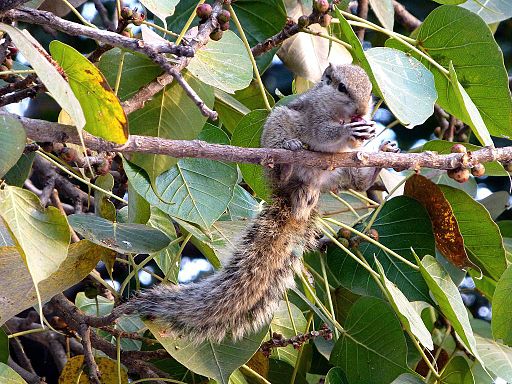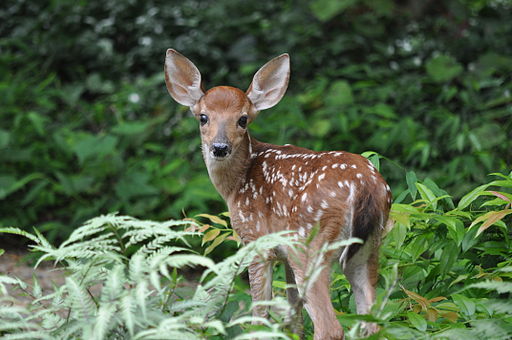Under the Fig Tree

A squirrel nibbling a fig in the Bodhi Tree at the Mahabodhi Temple in Bodh Gaya, Bihar state, India. Photo by Flickr user Anandajoti.
For a 2017 album, Blakey Morton performed Scott Joplin’s 1908 song “Fig Leaf Rag”.
— Izzy



Anyone who has ever been a vegetarian or vegan even for a short time has probably at some point encountered hostility from a meat eater, perhaps on several occasions from many different people. The experience can be baffling, particularly if the vegetarian or vegan does not make a big show of their practices. Self-righteous and preachy behavior can be annoying, certainly, but even when a vegetarian or vegan abstains from being a smug boor, some meat eaters will attack them as if they had been. A couple of recent news items help illustrate the innate hostility some people harbor for those who don’t adhere to mainstream dietary practices, even though it’s no one’s business but their own and the majority of them do not go out of their way to bother anyone.

Nothing delights these self-appointed guardians of imagined societal standards more than catching a vegetarian or worse, a vegan (and therefore probably a liberal!) in an act of perceived hypocrisy, because then they can denounce the entire belief system and not be bothered anymore by any of its implications, such as cruelty to animals or environmental degradation. A problem ignored is a problem solved! Meat eaters who worry about the perceived sanctimonious behavior of non-meat eaters occasionally like to bring up the supposed fact of Adolf Hitler’s vegetarianism, as if the actions and beliefs of one ogre tarnish all vegetarians. That is like suggesting the beliefs and actions of all Christians are suspect simply because some white evangelical Christian leaders are terrible human beings.
In this Merrie Melodies cartoon from 1947, Bugs Bunny and Elmer Fudd are at odds with each other as always, and the cartoon finishes with action that for its time was considered normal.
It is interesting to note that in dealing with hostility from some meat eaters, non-meat eaters discover they can assuage the unease of their interrogators when they ask about the reasons for their choice by stressing the healthful benefits over the other issues. That approach is not entirely dishonest, since there are real benefits for human health in foregoing or at least restricting meat eating. The American diet of meat with nearly every meal is not the most healthful, nor is it the historical norm. Most Americans could stand to reduce their consumption of meat, and in doing so they would benefit their own health as well the health of the environment and the quality of life for billions of animals. It is interesting and sad to note that of the three primary benefits of an alternative diet, only the first sets well with right wing authoritarians, and only on account of selfish reasoning.
— Izzy 
About the only thing an American gardener can say against daffodils is that they are not native to North America or to any part of the Western Hemisphere. Daffodils originate from southern Europe and northern Africa. That daffodils are not native here is an academic complaint, however, since the genie can hardly be stuffed back in the bottle at this point. Most of the people living now in the Western Hemisphere do not belong here, either, and it’s possible to argue they have done far more damage to the native habitat than anything innocent daffodils could have done. On the contrary, daffodils perform a great service everywhere because their trouble free disposition, loosening of hard soils, and cheerful announcement of spring give a greater portion to the gardener and non-gardener alike than they require in return.
— Izzy 
What is a varmint? A varmint is any animal whose survival habits conflict with your own, just like a weed is a plant out of place. Some people are thrilled to see deer browsing in their back yard, at least for a while, but to others those same deer have long since crossed over into varminthood after they have eaten hostas down to the ground, nibbled away rosebuds on the cusp of bloom, and used their antlers to rub the bark off young fruit trees, killing them. Garden enemies are not limited to deer, although they are probably at the top of most peoples’ lists, and a by no means complete catalog of varmints would for most folks have to include groundhogs (woodchucks), gophers, rabbits, rats, mice, voles, moles, chipmunks, skunks, dogs, cats, poisonous snakes, raccoons, opossums, squirrels, inattentive drivers, and unsupervised children.
Bill Murray as a golf course groundskeeper in the 1980 movie Caddyshack plots the destruction of the gophers who have been disfiguring the fairways and greens.
For some of these varmints, the critter kind, there are no shortage of chemical and mechanical repellents manufactured by companies eager to help out a distressed gardener and incidentally make a buck on a continuing basis, because all of them require regular re-application or constant tweaking to keep up their effectiveness. Gardeners who have wised up to this laborious and expensive treadmill may look instead to fencing, the only truly effective solution, though effective only in the sense of diminished and insecure expectations. No fence is a 100% effective deterrent for all critters at all times in all situations, as any convict will tell you, although in this case the malefactors seek to break in rather than out.
Some gardeners will try to remove the problem from the garden by relocating it, or by hiring someone to do so. Although this practice is illegal nearly everywhere, the gardener can feel smugly humane about it. Unfortunately, it is a poor strategy for everyone concerned. The varmint, let’s say a groundhog, is trapped in a humane trap, but sometimes the animal injures itself in some way in its panic to escape. Injury to a wild animal is often a slow death sentence. The gardener, or his or her proxy, then takes the groundhog out to some countrified place and releases it, feeling good about him or herself, even if the groundhog begs to differ. This is likely another slow death sentence for the groundhog, because for one thing it is not familiar with the new territory, and for another the territory, if it is any good, is likely already occupied by another groundhog or two who will not treat an interloper kindly. The gardener then, with a warm and fuzzy feeling brought on by reflecting on the newfound happiness of the groundhog he or she has just released to frolic in fields of daisies in the countryside, returns home where another groundhog from a neighboring yard eyes the newly unoccupied territory and its fresh crop of tasty vegetation.

